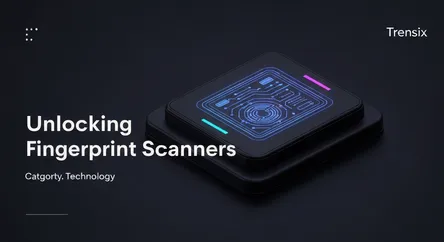Technology
Unlocking Fingerprint Scanners

Discover how fingerprint scanners work, why they are a top security feature in modern gadgets, and how this biometric technology impacts our daily lives.
What is it?
A fingerprint scanner is a biometric security system that uses the unique ridges and valleys of a person's fingerprint for identification and authentication. It captures a digital image of a fingerprint pattern and compares it to a stored template to grant or deny access. There are several types, including optical scanners that use light to capture an image, capacitive scanners that use electrical current to map the print, and advanced ultrasonic scanners that use sound waves to create a detailed 3D map of the fingerprint, even through dirt or moisture.
Why is it trending?
Fingerprint scanners are trending due to their seamless integration into countless consumer gadgets, most notably smartphones, tablets, and laptops. Their popularity stems from the perfect balance of robust security and user convenience. Unlike passwords or PINs which can be forgotten or stolen, a fingerprint is unique and always with you. As the technology has become more affordable, reliable, and faster, it has transitioned from a high-end feature to a standard for securing personal data and authorizing digital payments on a vast array of devices.
How does it affect people?
This technology significantly streamlines daily digital interactions. It replaces the cumbersome task of typing complex passwords with a simple, instantaneous touch, making it faster to unlock devices, log into apps, and approve online purchases. For users, this provides not only enhanced convenience but also a greater sense of personal security. By making strong authentication effortless, fingerprint scanners encourage better security practices and protect sensitive personal and financial information from unauthorized access, integrating security seamlessly into the user's routine.